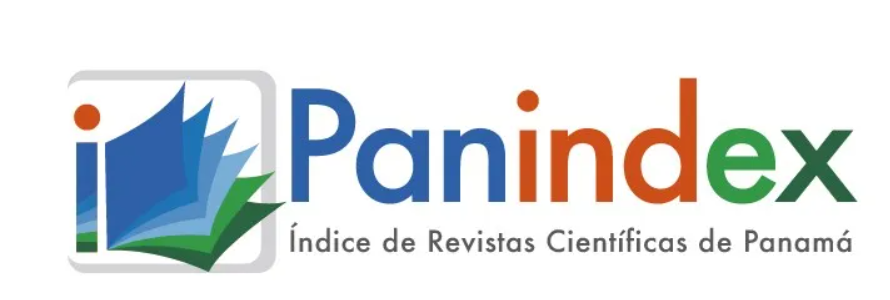The content of the publications and the links suggested in them are the sole responsibility of the authors and not of the METROPOLITAN UNIVERSITY OF EDUCATION, SCIENCE AND TECHNOLOGY (UMECIT) or DIALOGUS magazine. They are protected by international copyright laws as well as the UMECIT and DIALOGUS logos, hence their reproduction is totally prohibited.
This work is licensed under a Creative Commons Attribution-NonCommercial-NoDerivatives 4.0 International License.
The authors maintain the copyright and transfer the right of the first publication to the journal, with the article registered with Creative Commons Attribution-NonCommercial-NoDerivatives License, which allow others They can download the works published in this magazine and share them with other people, as long as their authorship is recognized, but they cannot be changed in any way nor can they be used commercially.
Authors are recommended to include their work in social networks such as Researchgate and institutional repositories once the article or visible fact has been published on the journal page, without forgetting to include the digital document identifier and the name of the journal.



Abstract
The general purpose of this research article was to determine the relationship between the principles of Neuroeducation and the bases of Montessori Thinking in the teaching pedagogical configuration. This research was framed from interparadigmatic complementarity through mixed methodology with a qualitative-quantitative sequential exploratory design carried out in 3 phases: prelude phase (moment one): qualitative analysis with interpretive hermeneutic method for teachers of the Ocuzca Educational Institution from the municipality of Anserma/Caldas; interlude phase (moment two): MicMac Structural Analysis – Godet method with experts in Pedagogical matters; and the postlude phase (moment three): quantitative analysis with descriptive statistics and a sample of 35 teachers. The results essentially reveal that the relational configuration of teachers and the positive emotional configuration of teachers in the educational institutions of the municipality of Anserma Caldas are not stable, balanced, much less leveled. These derivations enable the construct of a theoretical and practical alternative called “Pedagogical Decet” that enables the construction and configuration of the teacher's pedagogical action to optimize and improve the teaching and learning process based on the functioning of the brain.
Keywords
References
Aggleton, J. (Ed.). (2000). The Amygdala: A Functional Analysis (2nd ed.). Oxford University Press.
Bergman, M. (2010). On Concepts and Paradigms in Mixed Methods Research. Journal of Mixed Methods Research, 171–175. https://doi.org/10.1177/1558689810376950
Blackemore, S.J. y Frith, U. (2008). Como aprende el cerebro. Las claves para la educación. Barcelona: Ariel
Castañer Balcells, M., Camerino Foguet, O., & Anguera Argilaga, M. T. (2013). Métodos mixtos en la investigación de las ciencias de la actividad física y el deporte. Apunts Educación Física y Deportes, (112), 31-36.
Cruz, C. (2003). Los genios no nacen, ¡se hacen! Como programar tu mente para triunfar y ser feliz. Bogotá. Editorial Planeta.
De Acevedo, A. (2014). ¿Cómo funciona el cerebro de los niños? Bogotá: Penguin Random House.
Frith, C. (2007) The Social Brain? Philosophical Transactions of the Royal Society B: Biological Sciences, 362, 671-678. https://doi.org/10.1098/rstb.2006.2003
Fuentes, C. H. C., Alvarez, I., Matos, E. (2004). La Teoría Holístico - configuracional en los procesos sociales. Pedagogía Universitaria, 9(1), 1+. https://link.gale.com/apps/doc/A146892120/IFME?u=anon~58358d51&sid=googleScholar&xid=9aca68a0
Hernández, R., Fernández, C., & Baptista, P. (2014). Metodología de la investigación (Vol. 6, pp. 102-256). méxico: mcGraw-Hill.
Joas, H., de la Yncera, I. S., & Lluesma, C. R. (1998). El pragmatismo y la teoría de la sociedad. Madrid: Centro de Investigaciones Sociológicas.
L’Ecuyer, C., Murillo, J. I. (2020). El enfoque teleológico de la educación Montessori y sus implicaciones. Montessori’s teleological approach to education and its implications. Revista Española de Pedagogía,
78 (277), 499-517. doi: https://doi.org/10.22550/REP78-3-2020-06
Luna, B. (2006) Immaturities of The Adolescent ,Brain and Voluntary Control Laboratory of Neurocognitive Development University of Pittsburgh.
Montessori, M. (2002). El método Montessori. México. Editorial Diana
Montessori, M. (1982). El secreto de la infancia. Diana SA De CV.
Montessori, M. (1948). La mente absorbente del niño. Diana.
Montessori, M. (1998). La educación de las potencialidades humanas. Buenos Aires. Errepar
Mora, F. (2013). Neuroeducación. Solo se puede aprender lo que se ama. Editorial Siglo XXI.
Mora, F. (2018). Mitos y verdades del cerebro. Barcelona, España: Paidós Ibérica.
Morgane, P., Galler, J., y Mokler, D. (2005). A review of systems and networks of the limbic forebrain/ limbic midbrain. Progress in Neurobiology, 75(2), 143–160. https://doi.org/10.1016/j. pneurobio.2005.01.001
Morales Ruiz, J. (2015). María Montessori y la educación cósmica. REHMLAC. Revista de Estudios Históricos de la Masonería Latinoamericana y Caribeña, 7(2), 290-326
Ortiz, A. (2021). Cerebro, educación y vivir humano: Cómo potenciar la inteligencia y las emociones. Ediciones de la U.
Ortiz, A. (2022). Decolonizar las ciencias sociales: altersofía y hacer decolonial. Utopía Y Praxis Latinoamericana, 27(98), e6615732. https://doi.org/10.5281/zenodo.6615732
Ortiz, E. M. (1999). Inteligencias múltiples en la educación de la persona. Bonum. Argentina.
Ostrom, T. M. (1984). The sovereignty of social cognition.
Rilling, J. K., Gutman, D. A., Zeh, T. R., Pagnoni, G., Berns, G. S., & Kilts, C. D. (2002). A neural basis for social cooperation. Neuron, 35(2), 395-405.
Román, F., & Poenitz, V. (2018). La neurociencia aplicada a la educación: aportes, desafíos y oportunidades en América Latina. RELAdEI. Revista Latinoamericana de Educación Infantil, 7(1), 88-93.
Temple, E. (2002). Brain Mechanisms in Normal and Dyslexic readers. Current Opinion in Neurobiology, 12, 178-183. http://dx.doi.org/10.1016/S0959-4388(02)00303-3
Varela Ruiz, M. (2013). La entrevista, recurso flexible y dinámico. Investigación en educación médica, 2(7), 162-167.
Downloads
Publication Facts
Reviewer profiles N/A
Author statements
- Academic society
- Universidad Metropolitana de Educación, Ciencia y Tecnología
- Publisher
- Universidad Metropolitana de Educación, Ciencia y Tecnología




















